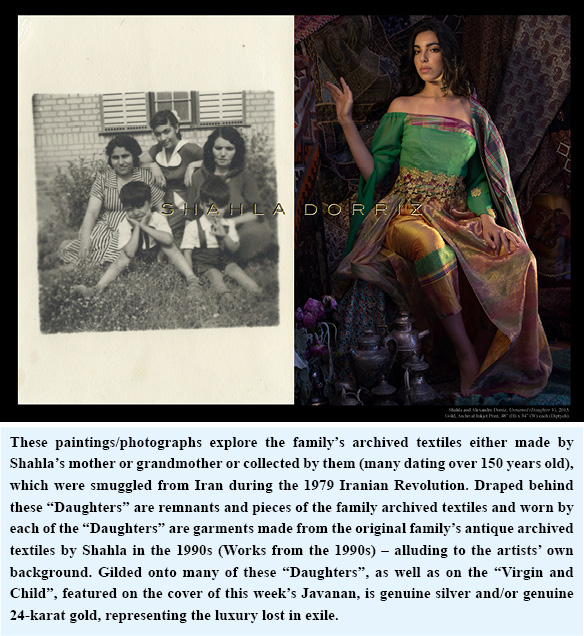
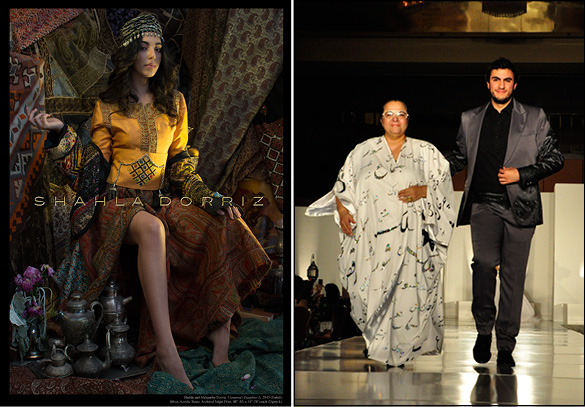
Currently on display at Shahla Dorriz in Beverly Hills, “Matriarchs/Archives” (Works from the 1990s) features the archived textile and design works of Couture Designer Shahla Dorriz in collaboration with the photographs and paintings by her son, Artist Alexandre Dorriz, as well as a video installation of archived footage from the 1990s of fashion shows, interviews, and models adorned in couture gowns in Manhattan streets. The show is an immersive experience and dialogue between mother and son Shahla and Alexandre, getting an intimate look into the inspiration behind the designs, the process, where the vintage textiles came from, and the connection between all of the elements.
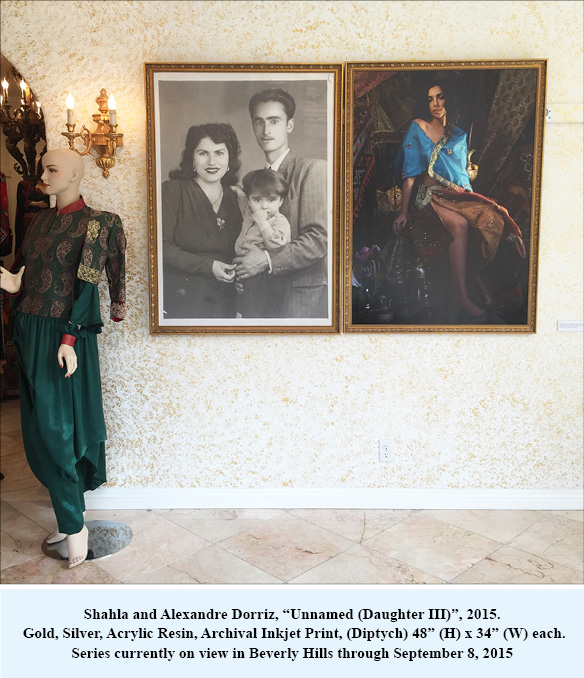
Introduction
(Abridged for interview)
by: Alexandre Dorriz
After the passing of my maternal grandfather I inherited several boxes of old black and white family photos and his hi-res flatbed photo scanner. I recalled it to be something he did frequently, scanning family photos, with what limited knowledge he had of the computer. To begin where he left off, scanning my old family photos, I began to uncover conversations, mannerisms, thoughts dissolved in the photos of my ancestors. The act itself became a channel for understanding mannerisms, facial structures similarities, and differences between family members.
“ / Archives “ started as a purpose, a calling, an almost hunch to affirm my identity with a medium I fall upon often for storytelling – photography. As well as being an opportunity to return to my mixed-media experimentation with painting on photographs while in studio at UC Berkeley, this series was research driven; I began to dig for pieces that were stuffed into a suitcase during the ’79 Iranian Revolution, made or collected by my grandmother and/or great-grandmother, and which my mother made into gowns, from the same textiles, in the 1990s. My mother’s nonchalance in creating these garments in the 1990s from these family heirlooms, as well as a combination of her and my firm belief that these garments are to never be sold commercially, but celebrated as the family’s past, became a driving force for conviction towards a project, something I’ve needed for a very long time.
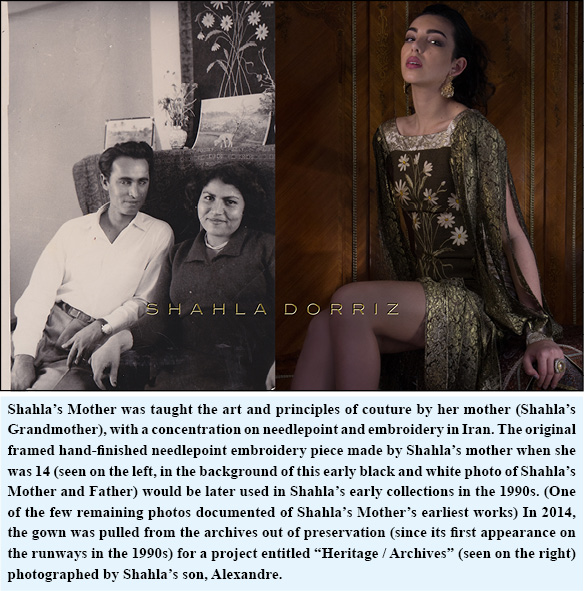
There was a story my mother told me recently, about my grandmother and how when she fled the country she had no room in her suitcases for silvers, golds, jewelries, and personal effects – only room for her and her mother’s lifelong creations of needlepoint and embroidery work as well as their collected textiles – at least, that was her priority. She left all those riches with her friends and filled her bags with what I’ve come to call the “Archives”. She never retrieved that jewelry and those personal effects after emigrating. I applied genuine 24 karat gold and genuine silver onto the prints in an attempt to bring those riches back for my grandmother and great-grandmother.
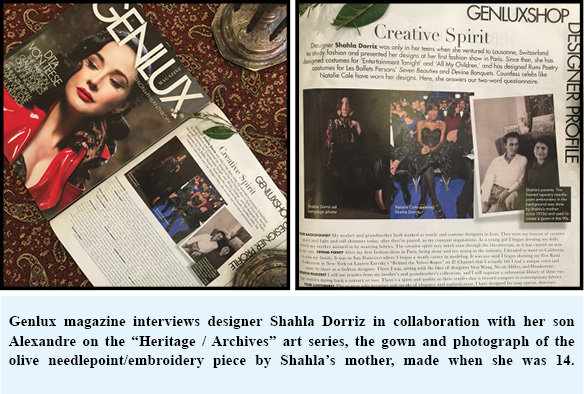
My research and dedication to my grandmother’s will is an ode to her own, prioritizing over her family’s heirlooms. And the most tragically beautiful aspect of all my explorations are that these same narratives occur in the fabrics of everyone’s identity – they’re just sitting in boxes in their attics, waiting for a great-grandson to unearth them and share their story with the world.
